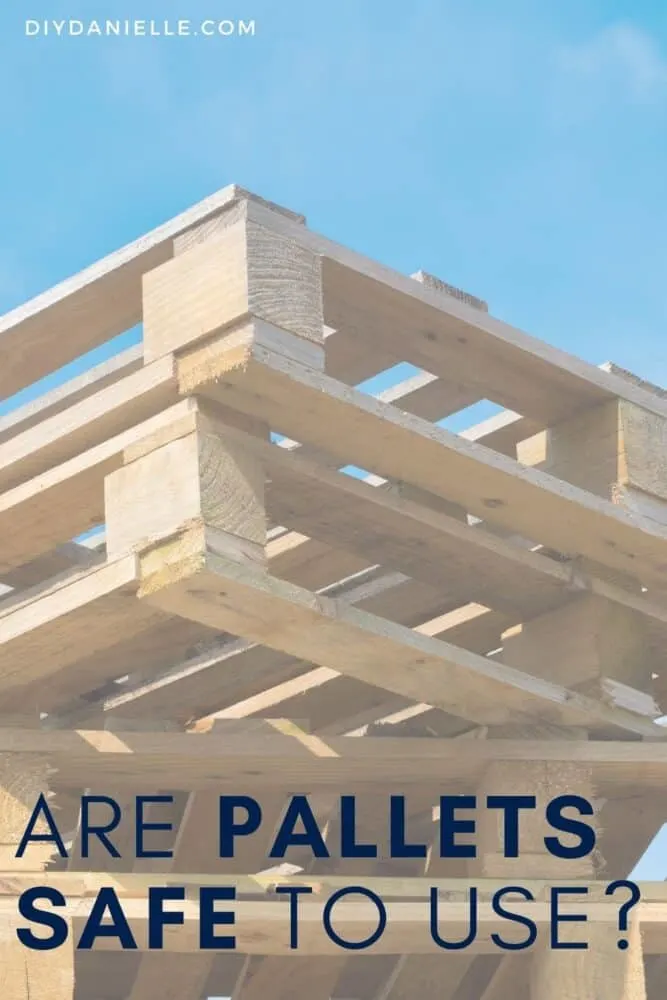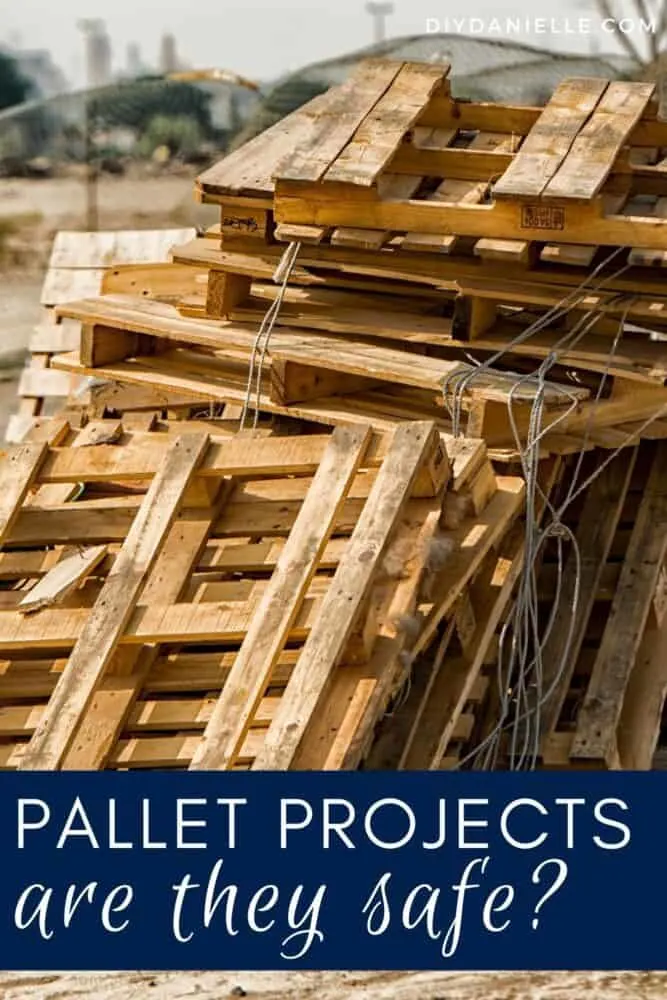Many people like using pallets for building furniture, using as shiplap, or other woodworking projects. But is it safe? Here’s what you need to know.
Many people love using pallets for projects; they’re often a free or low cost source of wood. Where wood prices are so high right now, taking apart pallets might seem like a worthwhile endeavor to you! But is it safe? There are some safety issues to consider when working with pallets, and not all pallets are made the same. They’re made to be sturdy and resist the elements. Some transport hazardous products or may harbor bacteria. This is particularly important when using pallet wood for indoor projects; you can get away with more when you’re using it for outdoor furniture or other outdoor projects.
This post may contain affiliate links which may earn me commissions should you click through them and take certain actions. As an affiliate for Amazon, Cricut, xTool, Home Depot, and other sites, I earn from qualifying purchases. Please DIY carefully. View my full legal disclosures here.
Please read the whole post so you don’t miss any important information!
What are Pallets?
If you’re into DIY at all, you will notice that a lot of DIY projects call for wooden pallets. But what are wooden pallets? Well, they are essentially flat structures, made up long, rectangular pieces of wood, that are used to transport different types of goods. However, the type of goods being transported range from things as simple as newspapers, to harmful and toxic chemicals. This leads to a lot of the pallets being dangerous to work with and sometimes even touch!
How to Determine if Pallet Woods are Safe?
So now that we know that not all pallet woods are safe, how do we know which ones are? Here are some things to look out for:
Markings or Stamps
- No markings: If there are no markings or stamps on the pallets it is probably domestic or locally used. And since most domestic or local pallets are not chemically treated, they should be safe to use. To ensure greater safety, try to check where they are coming from to see if those processes might involve use of any harmful products.
- Stamps to avoid:
- MB (Methyl Bromide) stamp indicates that the wood was treated (usually for pest control) with Methyl Bromide, which is highly toxic. So not only should you avoid using these pallets, but also make sure that these are disposed safely and properly.
- CP1, CP2, CP3, CP4, and CP5 are used to mark pallets used in the chemical industry, so it is best not to use them.
Note: Some countries like New Zealand and Australia still chemically treat internationally used pallets and do not restamp it, so it is better to avoid using imported wooden pallets if you are in these countries.
Safe stamps:
- IPPC marking. This mark ensures that the wood doesn’t have insects or any disease.
- HT (heat treated) and KD (kiln treated) are safe since they are not harmful for your health.
- DB (debarking) is applied to woods that have the outer layer removed, so is essentially safe to use.
- EPAL marking is used for European pallets that are safe since they are only treated with heat.
Note: If you find a pallet that contain any of the markings that should be avoided, avoid using them even if they contain these safe stamps.
Oil stains or discolorations
It is better to avoid these because they might contain toxic chemical spills.
Working with Pallet Wood
When working with pallet wood, one of the first things you’ll need to do is disassemble it. The time taken to do this varies depending on which tools you use, but always make sure to maintain the basic safety precautions. Some things you should make sure while taking it apart:
- Nails: Always, always take out the nails! At times it might seem like keeping a nail in (especially if it is twisted with the ends tucked and hard to take out) is fine, but that could lead to injuries and accidents at any time.
- Protective gear: Do not skip on wearing protective gear even if you think the entire process will only take a few minutes. Glasses and gloves are a must.
Where to Avoid Using Pallet Wood
- In a fireplace or firepit: If you are not absolutely sure that pallets are completely safe, it is better to avoid using them in fires to prevent release of potentially toxic fumes.
- Indoor projects: Unless absolutely necessary, using them for indoor projects are not recommended. This is because it could easily grow mold and bacteria under such conditions.
- Food related projects: Since some pallets may contain chemicals even if they are not marked with it. There are also chances of potential insect and bacterial growth. Surely you would not want such pallets to be near your food items.
Instead of these, try using your wooden pallets for outdoor projects or for shelving, tables and accessories in the garage or workshop.
Please share and pin this post! If you make this project, share it in our Stuff Mama Makes Facebook Group. We have regular giveaways for gift cards to craft stores. You can also tag me on Instagram @doityourselfdanielle; I love seeing everything you make!


Google Web Story: Pallet Wood Safety Tips
References
